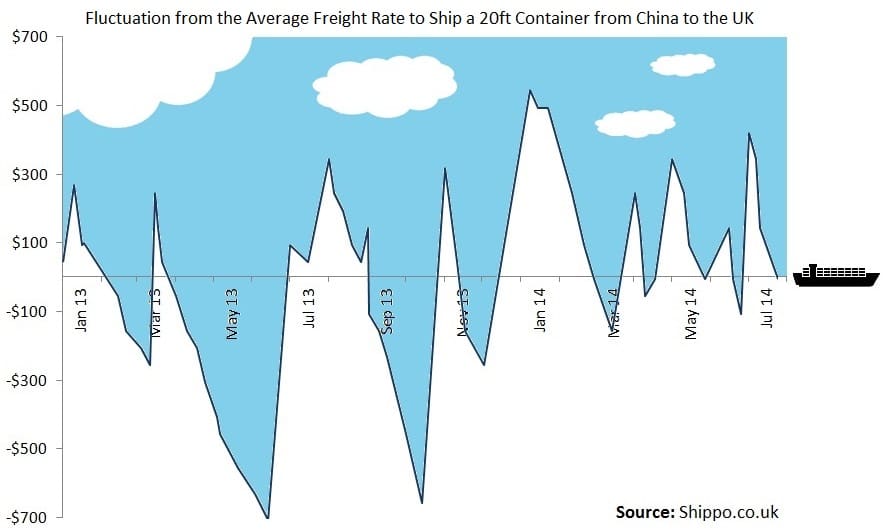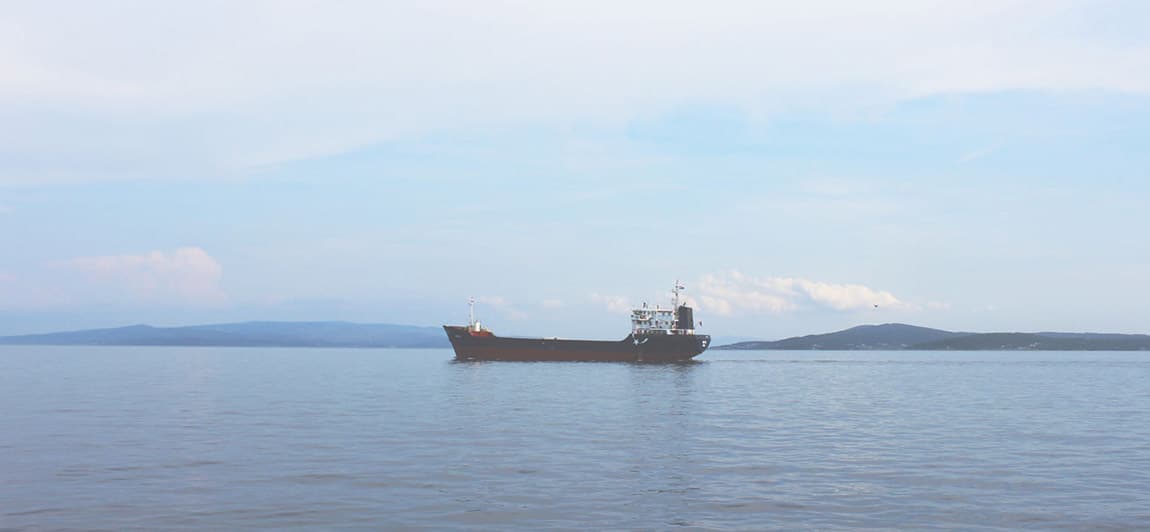“Why are the sea freight rates from China so unstable?” is one of the questions that crops up most when discussing full container load (FCL) shipments.
Part container load (LCL) shipments are not subject to such fluctuations. If you’re not shipping enough to fill a full container it’s not likely that your shipping costs would vary by more than about £5 per cubic metre from month to month.
It’s not all smooth sailing
When shipping a full container it’s very important to understand how the sea freight rates can vary. You could be left out of pocket if you don’t allow for rate fluctuations in your calculations. Before we try to explain the instability for FCL shipments from China to the UK, perhaps it’s best if we show you the statistics. The below graph shows how the rate for a 20ft container between China and the UK has fluctuated from the average between January 2013 and July 2014 (a few years ago but the rates have started doing the same things again):

As you can see from the graph, the rate for a 20ft container shipped from China to the UK varied by USD$1150 in a three month period from October 2013 and January 2014. If you checked the rate in October, based your calculations on that, commissioned your goods to be made (which may take 12 weeks) and then were ready to ship in January, then the chances are, you’d be pretty annoyed.
Why such choppy waters?
The reasons for these huge peaks and troughs (increases and decreases in freight rate) come as a result of either supply and demand or the shipping lines artificially increasing the rates using large general rate increases (GRIs).
GRIs are implemented by all the shipping lines in order to stop the falling sea freight rates. Unfortunately, the volume of containers being shipped is rarely enough to hold the rate in its inflated state so the shipping lines then have to decrease their rates again to win business.
….. until the rates are too low and the cycle continues.
At certain times of year, the ships are full and normal supply and demand market forces can drive prices up. Before Chinese New Year (in Jan/Feb) and when imports in preparation for Christmas sales are at their peak there is a lot less spare space on the vessels. As a result, the shipping lines can charge more for the space that is available. The shipping lines can also remove vessels from service to encourage the same effect as the same amount of containers have to be loaded on fewer containerships.
What’s the solution?
Importing goods from China probably takes longer than you’d like already but being flexible can save you money when importing full containers.
In any market that has rate fluctuation, if possible, you should buy when the rates are low. If you can plan your shipping to be after Chinese New Year and for sailings later on in the month (as GRIs are often failing to be maintainer before a new one on the 1st of the following month) then you could take advantage of these fluctuations.
The cost to you and your business then becomes one of stock management. Can you afford an extra week or two before your goods arrive or if you got them earlier than normal could you juggle cash flow and warehousing? If however, you can find a way to buy smarter you could stand to make some substantial savings.
For further comment or insight into Sea Freight Rates contact us on 0203 384 0498 or info@shippo.co.uk
Trending; sea freight rates, freight rate, china shipping freight
